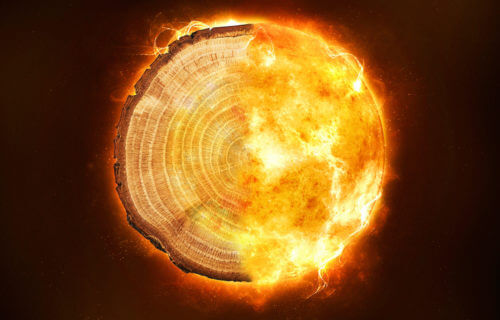BRISBANE, Australia — A huge storm in space striking the Earth could lead to an “internet apocalypse” within the next decade, researchers in Australia warn. This radiation would leave people offline for months or even years, knocking out satellites and power lines, their study explains.
The mysterious, unpredictable, and potentially devastating astrophysical event has been mapped for the first time — using tree rings. Forests are a great observatory for cosmic radiation, with an archive going back thousands of years.
“Based on available data, there’s roughly a one percent chance of seeing another one within the next decade,” says lead author Dr. Benjamin Pope from the University of Queensland in a media release.
“But we don’t know how to predict it or what harms it may cause. These odds are quite alarming, and lay the foundation for further research.”
How do tree rings explain what’s going on in space?
The Australian team applied cutting edge statistics to data from millennia-old trees. Rings in the wood provide “snapshots” of Earth’s past.
“These huge bursts of cosmic radiation, known as Miyake Events, have occurred approximately once every thousand years but what causes them is unclear,” Dr. Pope adds.
“The leading theory is that they are huge solar flares. We need to know more, because if one of these happened today, it would destroy technology including satellites, internet cables, long-distance power lines and transformers. The effect on global infrastructure would be unimaginable.”
They look like a spectacular fireworks show but could send humanity back to the dark ages. If a storm made its way to Earth, it would cut off power and phone networks across the world by frying satellites in orbit and crashing power grids.
First author Qingyuan Zhang, a math student at Queensland, developed software to analyze every available piece of data on tree rings.
“Because you can count a tree’s rings to identify its age, you can also observe historical cosmic events going back thousands of years,” Zhang says.
“When radiation strikes the atmosphere it produces radioactive carbon-14, which filters through the air, oceans, plants, and animals, and produces an annual record of radiation in tree rings. We modelled the global carbon cycle to reconstruct the process over a 10,000-year period, to gain insight into the scale and nature of the Miyake Events.”
Energetic particles strike the atmosphere and produce the telltale chemical, which is then locked in tree rings.
New study challenges old tree ring theory
The common theory has been they are giant solar flares.
“But our results challenge this,” Zhang continues. “We’ve shown they’re not correlated with sunspot activity, and some actually last one or two years. Rather than a single instantaneous explosion or flare, what we may be looking at is a kind of astrophysical ‘storm’ or outburst.”
They are made up of clouds of extremely hot particles (plasma) that hurtle through space at tremendous speed. They are potentially bad news for the Earth. Every 100 years or so, they are released in our direction. The fact scientists don’t know exactly what Miyake Events are, or how to predict their occurrence, is very disturbing.
“The world’s forests are a great observatory for cosmic radiation, with an archive going back thousands of years,” Dr. Pope says, according to a statement from SWNS.
“Recent studies have revealed ‘Miyake events’ – huge and potentially destructive radiation spikes every thousand years or so, ascribed to solar flares bigger than any in modern history. This study applies a computer model to all previous data on these events, and challenges this previous explanation – the Sun may not be to blame.”
The research is published in the journal Proceedings of the Royal Society A Mathematical Physical and Engineering Sciences.
South West News Service writer Mark Waghorn contributed to this report.

